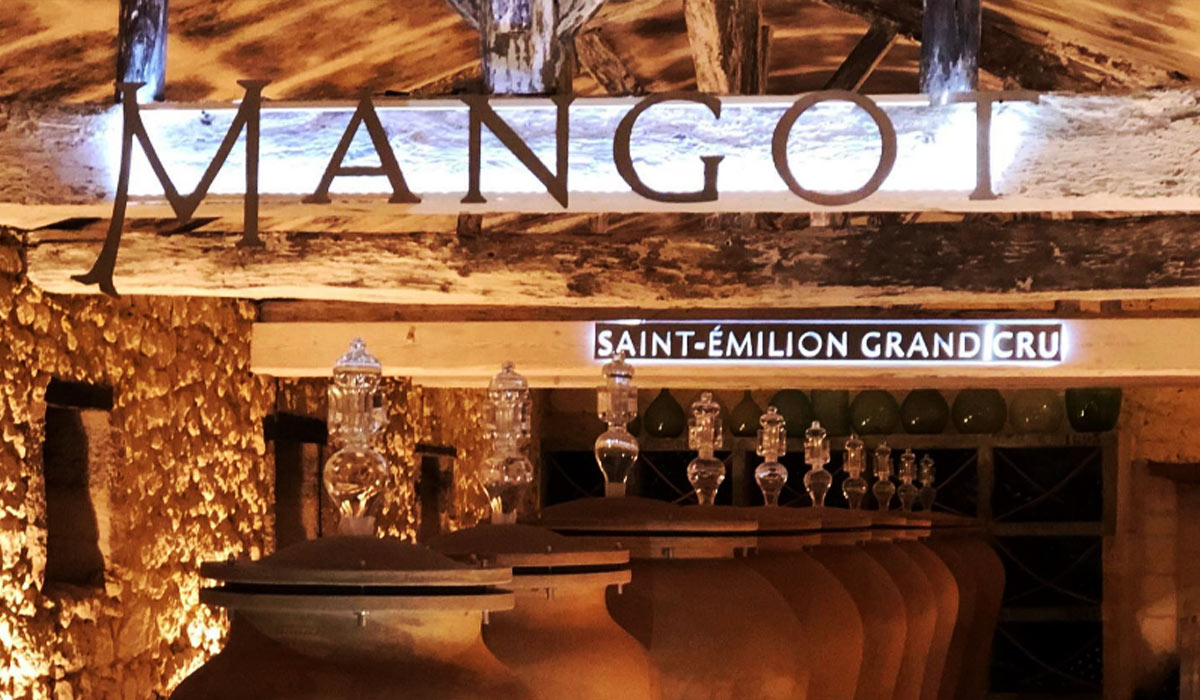Visit Saint Emilion wine classification arrived at the beginning of September 2022! And it was a great honor to welcome back our dear partner domaine, Mangot, which has been elevated to the rank of Grand Cru Classé de Saint Emilion! A château we've been tasting and recommending to our loyal customers for several years now. So it's time to introduce him to you!
Presentation of the winery: Mangot
A long history on Bordeaux's Right Bank, dating back to 1546. However, the modern era of Mangot began in 1952 when the vineyard was purchased by Jean Petit, Yann and Karl's grandfather, 3 generations of winemakers in succession. Today, the estate is still owned by this family.
Château de Lisse was Mr. PETIT's first acquisition, and he actually bought Château MANGOT in 1985, when the properties were combined, giving Mangot a much larger vineyard. This decision was also logical from a historical point of view, since the vineyards were originally part of the same estate in the previous century. Indeed, the land base has been the same for over 50 years.
Today, Château Mangot is managed by Karl Todeschini and Yann Todeschini. Château Mangot is located due south, to the east of Saint Emilion, and is perhaps the last vineyard in the appellation before it joins the Côtes de Castillon appellation.
Mangot vineyard
In the vineyards
Mangot's 35-hectare vineyard is planted with 85% of Merlot, 10% of Cabernet Franc and 5% of Cabernet Sauvignon. The terroir is composed of clay and limestone soils. The vineyard is divided into 21 distinct plots, based on a combination of soil types and exposures.
Their old vines are on average around 40 years old. However, some of their Merlot plots are over 60 years old. They have good neighbors. Located in the cooler soils found in the Saint Etienne De Lisse area of St Emilion. Neighbors include Château Faugeres, Château de Pressac, Château Fleur Cardinale and the famous Château Valandraud. (Click on photo to enlarge)
Winemaking
Château Mangot: To produce the wine for the main cuvée, vinification takes place in stainless steel vats. Malolactic fermentation takes place in stainless steel vats. The wine is then aged in different percentages of new French oak, ranging from 25% to 30%, as well as one- and two-wine barrels, and now 15% in amphorae. The wines are then aged for 12 to 16 months before bottling.
Mangot produces other vintages:
- Todeschini Distique, which is a plot selection using a completely different blend than their other wines, with around 40% of Cabernet Franc, 30% of Cabernet Sauvignon and 30% of Merlot, aged in 100% new French oak barrels. This cuvée was previously known as Mangot Todeschini until the 2018 vintage.
- L'Autre Mangot is an interesting wine because it is aged entirely in amphora without any sulfur.
- The Todeschini family also owns Château La Brande in the Côtes de Castillon appellation, with the "Marmot de La Brande" cuvée.
- "M" de Mangot: This is a fine rosé wine from the estate. It was created in 2009 as a result of the family's desire to produce a winegrower's rosé, with real work in the vineyard and vinification worthy of a great white wine. Certified organic, this is a 100% Merlot cuvée with a policy of vinification as natural as possible. As far as sulfites are concerned, they use only a third of the doses authorized in Organic Agriculture.
NOTA BENE: Rather than cuvées, we're really talking about distinct crus, depending on the choice of blending, vinification and ageing. And only Château MANGOT bears the château name (particularly with regard to grading).
The best vintages of Château Mangot
According to the tasters' notes, here are the best vintages of Château Mangot.
- Château Mangot 2018
- Château Mangot 2020
- Château Mangot 2019
- Château Mangot 2021
- Château Mangot 2017
When should you drink a Château Mangot wine?
Château Mangot needs a little time before it can be appreciated. Young vintages can be decanted for two/three hours or more. This allows the wine to soften and reveal its perfume.
Older vintages may need a little decanting, just enough to remove sediment. Château Mangot is generally best with at least 4 to 6 years in bottle. Of course, this may vary slightly, depending on the character of the vintage. Château Mangot is the most pleasant to drink and should reach maximum maturity between 7 and 13 years after the vintage.
How to serve Château Mangot
This grand cru classé is best served at 15°C. The cooler temperature, ideally after cellaring, gives the wine more freshness and energy.
Château Mangot goes well with all classic meat dishes: veal, pork, beef, lamb, duck, game, roast chicken, roasted, braised and grilled dishes. It also goes well with Asian dishes, fish-rich dishes such as tuna, mushrooms and pasta.
Feel free to browse our cellar to find the finest bottles of Saint Emilion, with the best levels of conservation, for great tastings!
See also our article on : ranking of Saint-Émilion's finest wines








![✨ Comptoir des Millésimes honors Champagne's great winemakers ✨[LINK TO THE ORGANIC CELLAR]We've selected 11 exceptional estates that reveal the full richness of Champagne terroir through unique, refined cuvées. Hugues Godmé - In Verzenay, this family-run biodynamic estate offers precise, vibrant champagnes with a beautiful mineral tension.Egly-Ouriet - A benchmark for the Montagne de Reims, its powerful champagnes, aged for long periods in barrel, impress with their complexity.Moussé Fils - In Cuisles, the Meunier grape is king. Pertois-Moriset - Pure, taut Chardonnay Grands Crus for lovers of chalky finesse. A fine address in Mesnil-sur-Oger.Geoffroy - In Aÿ, this domaine produces fine champagnes, carefully crafted and barrel-aged to reveal the full complexity of the terroir.Larmandier-Bernier - Biodynamic viticulture, exceptional parcels and purity. Crystal-clear, intense champagnes for connoisseurs.Roger Coulon - Eight generations of expertise at Vrigny. Balanced, subtle and elegant champagnes.A. Bergère - In Avize, a dynamic house offering expressive, fruity and accessible cuvées.Adrien Renoir - A promising talent from Verzy, he produces fine, complex champagnes with a true sense of terroir.De Sousa - Emblematic house in Avize. Richness, depth, long ageing: Chardonnay at its peak.Pierre Paillard - In Bouzy, the family magnifies Pinot Noir with vinous, racy and sincere cuvées.📦 Order now on our website#ComptoirdesMillésimes #Champagne #VigneronsIndépendants #GrandVin #ChampagnesdeTerroir #LivraisonRapide](https://www.comptoirdesmillesimes.com/blog/wp-content/plugins/instagram-feed/img/placeholder.png)